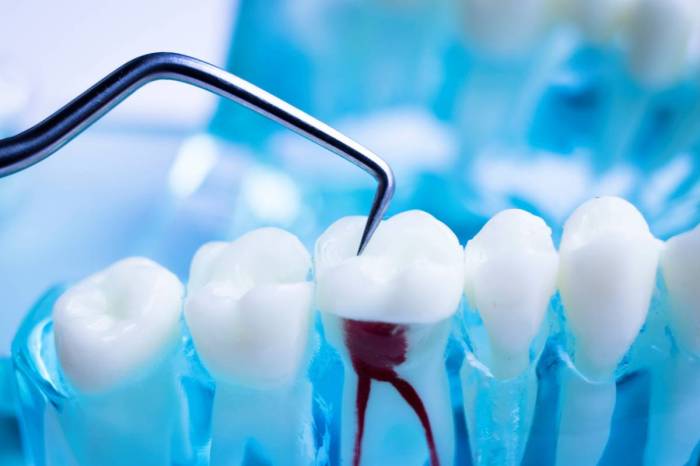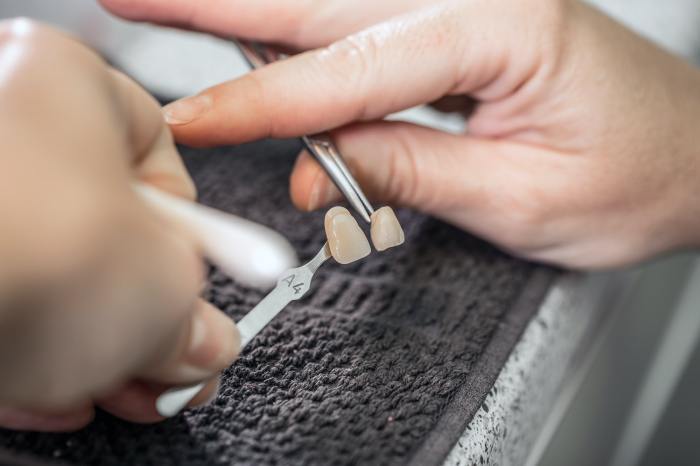How long does it take to fill two cavities? This journey into dental procedures unveils the intricacies of cavity fillings, from simple to complex. Understanding the factors that influence treatment time is crucial for managing expectations and ensuring a smooth experience. From the type of filling to the dentist’s expertise, every element plays a role in determining the duration.
The process involves meticulous preparation, selection of the appropriate filling material, and the expertise of the dental professional. Each step is carefully considered, ensuring optimal results and patient comfort. This exploration delves into the specifics of filling two cavities, presenting a comprehensive overview for those seeking insight into this common dental procedure.
Factors Affecting Treatment Time

Filling cavities, especially two, can take a bit of time, right? It’s not just a quick fix, like, a few minutes, especially if the cavities are a bit tricky. Lots of things can affect how long it takes, from the cavities themselves to the dentist’s expertise. Let’s dive into the details!
Factors Influencing Treatment Duration
Several factors play a crucial role in determining the time needed to fill two cavities. Understanding these factors can help you anticipate the treatment process and feel more prepared.
- Cavity Complexity: The size, depth, and location of the cavities directly influence the treatment time. A small, shallow cavity on a visible surface is generally quicker to fill than a deep, extensive cavity, particularly if it’s hidden or requires careful preparation.
- Number of Cavities: Filling two cavities takes longer than filling one. It’s not just twice the time, but there’s extra prep and time spent on each cavity.
- Dentist’s Experience and Skill: A skilled dentist with extensive experience can often perform procedures more efficiently, which can shorten the treatment time. They can quickly assess the situation, perform the necessary steps, and make sure the fillings are precise and durable.
- Patient’s Comfort Level: If the patient is anxious or uncomfortable, it can potentially increase the treatment time. A calm patient allows the dentist to work more effectively.
- Use of Advanced Techniques: Dentists might use specialized tools or techniques to address complex cavities. This could include using specialized equipment or more intricate procedures. These advanced techniques can take more time but lead to more durable fillings.
Complexity and Treatment Time
The complexity of the cavities significantly impacts the total treatment time.
- Simple Cavities: These involve smaller areas and require minimal preparation. They usually can be filled in a single session, taking about 30-45 minutes for one cavity and 60-90 minutes for two. Think of small chips or shallow pits.
- Moderate Cavities: Moderate cavities might need more extensive preparation or multiple steps. One cavity could take 45-60 minutes, and two cavities would need about 90-120 minutes.
- Complex Cavities: Complex cavities often involve deep decay, multiple layers, or unusual locations. Filling one of these could take 60-90 minutes, and filling two could require two sessions or more, extending the total time significantly. This includes cavities near the roots, nerves, or extensive damage.
Dentist’s Experience and Skill Level
A dentist’s experience and skill directly affect the treatment time. Experienced dentists are usually faster and more precise.
- Experienced Dentists: They often have a good understanding of the patient’s needs, are more efficient in their work, and can quickly identify the best approach, potentially shortening the treatment time. They have performed similar procedures many times, which builds efficiency.
- Less Experienced Dentists: A newer dentist might take a bit longer as they are still developing their skills. They might take extra time to ensure the quality of work, which is perfectly understandable.
Comparison Table
This table provides an estimated comparison of time needed to fill one or two cavities, considering varying complexity levels. Remember these are just estimates, and the actual time may vary.
| Cavity Complexity | Time to Fill One Cavity (minutes) | Time to Fill Two Cavities (minutes) |
|---|---|---|
| Simple | 30-45 | 60-90 |
| Moderate | 45-60 | 90-120 |
| Complex | 60-90+ | 120+ (possibly multiple sessions) |
Types of Fillings and Materials: How Long Does It Take To Fill Two Cavities
Picking the right filling material for your cavities is crucial, like choosing the perfect outfit for a special event. Different fillings have different pros and cons, impacting everything from how long the treatment takes to how your mouth feels afterward. Understanding these differences helps you make an informed decision with your dentist.
Various Types of Dental Fillings
Dental fillings come in various forms, each with its own set of characteristics. The most common types include composite resin and amalgam. These materials have different properties and effects on your oral health, affecting the treatment time and your overall experience.
Different Materials Used for Fillings
Composite resin and amalgam are the most popular filling materials. Composite resin, often called “white fillings,” is a tooth-colored material made of plastic and glass. Amalgam, a metal alloy primarily containing mercury, is a more traditional filling material. The choice between these materials depends on several factors, including the size and location of the cavity.
How Filling Material Affects Treatment Time
The material used for the filling directly influences the time needed to complete the procedure. Composite resin fillings, for example, often take slightly longer to complete than amalgam fillings, but they offer a more aesthetically pleasing outcome. Amalgam fillings, on the other hand, are typically quicker to place, which might be a plus for some.
Comparison of Filling Materials
The properties and characteristics of different filling materials significantly affect the treatment time and overall experience. Composite resin fillings are often chosen for their natural look, while amalgam fillings are known for their durability and cost-effectiveness. The technique for placing each type also impacts the procedure’s duration.
| Filling Material | Description | Treatment Time Impact | Pros | Cons |
|---|---|---|---|---|
| Composite Resin | Tooth-colored filling material, primarily plastic and glass. | Generally slightly longer treatment time due to multiple layers and shaping. | Aesthetically pleasing, blends seamlessly with natural teeth, good biocompatibility. | Can be more prone to wear and tear compared to amalgam, slightly more expensive. |
| Amalgam | Metal alloy, primarily containing mercury. | Typically faster treatment time due to its straightforward application. | Highly durable, cost-effective, good for large cavities. | Not tooth-colored, may cause some discoloration, potential concerns regarding mercury. |
Dental Procedures and Techniques
Getting two cavities filled can feel a bit daunting, but it’s totally manageable! Dentists use precise techniques and tools to ensure a smooth and efficient process. Understanding the steps involved can help ease any anxieties. Let’s dive into the nitty-gritty of how it all works.Dental procedures are designed to be precise and minimize discomfort, using the latest techniques and materials.
The dentist’s skill and experience are crucial for a successful and comfortable procedure.
Steps Involved in Filling Two Cavities
Understanding the sequence of steps involved in filling two cavities is key to appreciating the efficiency of dental procedures. Each step is carefully executed to ensure the best possible outcome.
- Cavity Preparation: The dentist first isolates the area around the cavities. This might involve using a rubber dam to create a dry and controlled environment. Next, the decayed tooth material is carefully removed using specialized instruments. This crucial step ensures a clean and healthy base for the filling material. This meticulous preparation is paramount in preventing the cavity from recurring and ensuring the longevity of the filling.
- Cavity Shaping and Etching: After removing the decay, the dentist carefully shapes the cavity to accommodate the filling material. The surface of the cavity is then etched to create microscopic grooves, promoting better adhesion between the filling and the tooth structure. This process is similar to preparing the surface of a wall to receive paint; the rougher the surface, the better the adhesion.
A strong bond is essential for a lasting filling.
- Filling Placement: The filling material, carefully selected based on the specific needs of the cavity, is then placed into the prepared cavity. This material comes in different forms, from composite resin (which mimics natural tooth color) to amalgam (a silver-colored alloy). Different materials have different properties, affecting the treatment time. The dentist carefully manipulates the filling material to precisely fill the cavity, ensuring there are no gaps or voids.
- Filling Shaping and Finishing: Once the filling material is placed, the dentist meticulously shapes and polishes it to match the surrounding tooth structure. This step ensures a natural-looking and smooth surface that feels comfortable when biting and chewing. Proper shaping and polishing are crucial for preventing food particles from getting trapped and causing further issues.
- Checking and Adjusting: The final step involves checking the bite and adjusting the filling as needed. This ensures the filling doesn’t interfere with chewing or cause any discomfort. Any adjustments are made to provide a perfect fit, ensuring optimal comfort and function.
Techniques for Efficient Cavity Filling
Dentists employ various techniques to complete cavity fillings efficiently and effectively.
- Digital Imaging: Advanced imaging technologies like digital X-rays allow dentists to visualize the cavities with precision. This aids in determining the extent of the decay and the ideal preparation for the filling. This allows for more accurate diagnoses and treatment plans.
- Specialized Instruments: Specialized instruments and tools facilitate precise cavity preparation and filling placement. These tools help minimize treatment time and maximize efficiency.
- Material Selection: The choice of filling material plays a significant role in treatment time. Different materials have varying application methods and setting times. Understanding the properties of each material allows dentists to select the most suitable one for the specific cavity.
- Teamwork: Effective teamwork between the dentist and dental assistant is crucial. Coordination between the team members optimizes the workflow, contributing to the overall efficiency of the procedure.
Preparing the Cavity for Filling
Preparing the cavity correctly is critical for a successful and lasting filling. It directly influences the longevity of the filling and the overall treatment time.
- Isolation: Isolating the area around the cavity is crucial. This creates a dry and controlled environment, facilitating better access and visibility for the dentist. This helps minimize any potential issues during the procedure.
- Removal of Decay: Careful removal of the decayed tooth material is essential to ensure a clean and healthy base for the filling material. This step removes the source of the infection and prepares the cavity for proper filling.
- Cavity Shaping: Shaping the cavity is vital to ensure the filling material fits precisely. Proper shaping minimizes the risk of leakage and maximizes the longevity of the filling.
Placing and Shaping the Filling Material
The method for placing and shaping the filling material depends on the type of material used.
- Composite Resin Fillings: These fillings are applied in layers, each layer is hardened using a special light. The dentist carefully sculpts the filling to match the natural contours of the tooth. The use of a light-curing system ensures faster setting and less manipulation.
- Amalgam Fillings: Amalgam fillings are shaped using specialized instruments and are condensed and manipulated into the cavity. The process involves careful compaction to eliminate any gaps.
Importance of Proper Cavity Preparation
Proper cavity preparation is vital for minimizing treatment time and ensuring the filling lasts.
- Preventing Recurrence: A well-prepared cavity prevents the recurrence of decay. This minimizes the need for future interventions, saving both time and money.
- Long-lasting Fillings: Proper preparation creates a strong bond between the filling and the tooth structure, leading to a more durable and long-lasting filling. This reduces the frequency of future dental visits.
Patient Factors and Considerations
Filling cavities is a pretty straightforward dental procedure, but the whole experience can be impacted by the patient. Factors like your comfort level, cooperation, and how well you understand the process all play a role in how smoothly and quickly things go. A relaxed and communicative patient usually means a faster and more comfortable experience.Patient anxiety and discomfort can definitely influence the treatment time.
If a patient is nervous or feeling pain, it can make it harder for the dentist to work efficiently. This might involve needing extra time for calming techniques, or even postponing the procedure until the patient is more relaxed. Think about how your own body language can influence how you feel and how your dentist might respond to that.
Patient Anxiety and Discomfort
Patient anxiety, whether it’s a general fear of dental procedures or a specific apprehension about the filling process, can significantly impact treatment time. The dentist may need to spend extra time addressing the patient’s anxieties and concerns before proceeding. For example, a patient who experiences significant anxiety might require more time for calming techniques, like deep breathing exercises or distraction methods, before the filling process can begin.
This can often lead to a longer appointment. Pain and discomfort can also be factors, as the dentist needs to ensure the patient’s comfort throughout the procedure.
Patient Cooperation
Patient cooperation is key to accelerating the treatment. A patient who follows instructions carefully and remains still during the procedure allows the dentist to work more efficiently. This includes things like keeping their mouth open as directed and not moving around unnecessarily. A cooperative patient contributes directly to a faster and more efficient experience.
Impact of Patient Behavior, How long does it take to fill two cavities
A patient’s behavior, such as their patience and attentiveness, can significantly affect treatment time. A patient who is calm, attentive, and follows instructions is more likely to have a shorter procedure. Conversely, a patient who is restless or fidgety might make the procedure take longer. Imagine a patient who keeps moving their head or talking excessively. These actions will inevitably increase the time needed for the procedure.
Effective Communication
Effective communication between the dentist and patient is crucial for managing expectations regarding treatment time. A dentist who clearly explains the procedure, anticipates potential challenges, and discusses any potential delays with the patient helps set realistic expectations. This open communication can ease the patient’s anxieties and contribute to a more comfortable and efficient experience. If the dentist communicates transparently about potential delays due to factors like patient anxiety or difficulty in accessing the cavity, it can significantly reduce patient stress.
Potential Variations in Treatment Time

Filling two cavities can take a range of time, depending on many things. It’s not always a simple 30-minute job, you know? Like, sometimes it’s quick and easy, but other times, things get a bit more complicated. Factors like the type of cavities, the dentist’s experience, and even the patient’s comfort level can all play a role in how long it takes.Experienced dentists often have a knack for efficiency, and they can often get the job done in a reasonable amount of time.
But a newbie dentist, even if they’re really skilled, might take a bit longer to get the hang of it, especially if the cavities are a bit tricky. It’s all about finding the right balance between speed and precision.
Typical Treatment Time Ranges
This table gives a general idea of how long filling two cavities might take, considering various factors. Keep in mind these are just estimates. Your actual time might vary.
| Scenario | Estimated Treatment Time (minutes) | Reasoning |
|---|---|---|
| Simple cavities, experienced dentist | 30-45 minutes | The dentist is likely efficient, and the cavities are straightforward to fill. |
| Complex cavities, experienced dentist | 45-60 minutes | More complex fillings require more attention to detail and precise procedures, but the dentist’s experience ensures a good time management. |
| Simple cavities, new dentist | 45-60 minutes | The new dentist might take a bit longer to get used to the procedure and may need extra time to ensure accuracy. |
| Complex cavities, new dentist | 60-90 minutes | The dentist may need more time to carefully address complex cavities, potentially needing more steps or extra attention to detail. |
| Patient with anxiety or discomfort | 60+ minutes | The patient’s anxiety or discomfort can impact the procedure’s duration as the dentist must ensure patient comfort and manage their reactions. |
| Cavities located in hard-to-reach areas | 45-90 minutes | Working in difficult areas takes extra time to maintain precision. |
Potential Variations Based on Dentist Experience
A dentist’s experience level significantly affects treatment time. An experienced hand can tackle even complex cavities efficiently, usually finishing the job faster than a newer dentist. It’s like riding a bike; the more you do it, the faster and smoother you get.
Scenarios of Longer Treatment Time
There are situations where the treatment time might exceed the expected range. For instance, a patient with significant anxiety or discomfort might require more time to manage their reactions, slowing down the process. Similarly, cavities in hard-to-reach areas, or those needing special techniques, will inevitably take longer. A new dentist might also need more time for complex cavities to ensure precision and avoid mistakes.
Scenarios of Shorter Treatment Time
On the other hand, if the cavities are simple and the dentist is experienced, the process might be faster than expected. A relaxed and cooperative patient will also contribute to a quicker treatment time. Sometimes, the dentist might have a streamlined workflow that allows them to efficiently handle the procedure.
Conclusive Thoughts
In conclusion, the time required to fill two cavities varies significantly based on numerous factors. From the complexity of the cavities to the dentist’s experience and the patient’s cooperation, every aspect plays a vital role. Understanding these nuances empowers patients to make informed decisions and prepare for their dental appointments with confidence. The key is to communicate openly with your dentist, and together, you can navigate the process smoothly and efficiently.
General Inquiries
How does the size of the cavities affect the filling time?
Larger cavities, requiring more material and extensive preparation, will naturally take longer to fill than smaller ones.
What if I have a fear of dental procedures?
Anxiety can sometimes extend the treatment time. Open communication with your dentist can help manage any apprehension and ensure a comfortable experience.
Can the type of filling material impact the time taken?
Different filling materials have varying application times. Composite resin, for example, might be slightly faster than amalgam in some cases.
How does the dentist’s experience affect the filling time?
Experienced dentists often have refined techniques that can expedite the process. Their expertise contributes to a more efficient and precise procedure.
 Nimila
Nimila



